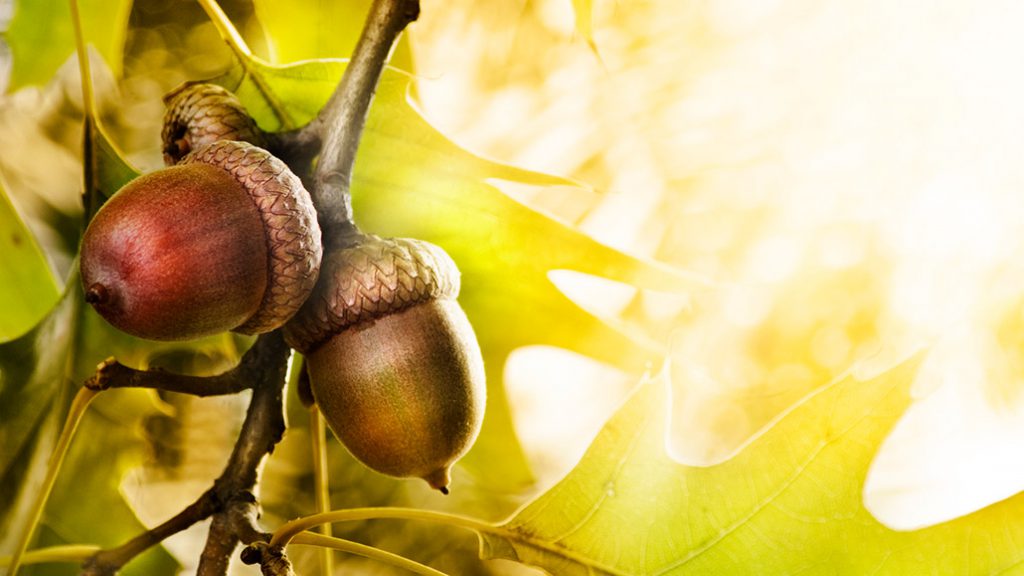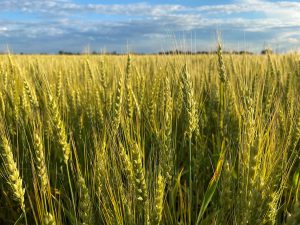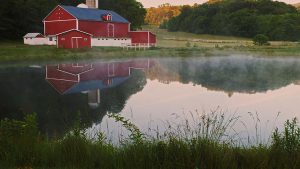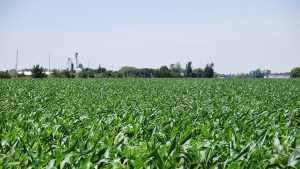Biodiversity loss
CONSERVATION TIPS FOR FARMERS

BIODIVERSITY, OR THE variety of all living things, has been declining at an alarming rate in recent years. While the continued loss of plant and animal species is linked to human activity, there may be actions people can take to reverse the decline.
Dr. Doug Tallamy is a professor and chair of the department of entomology and wildlife ecology at the University of Delaware and author of the recent New York Times bestseller “Nature’s Best Hope: A new approach to conservation that starts in your yard”. He studies insect-plant interactions as well as their effects on animal communities and works extensively to share practical recommendations with the public. Tallamy presented the ‘Nature’s Best Hope’ session at the Ontario Agriculture Conference.
“Only five per cent of the lower United States is anything close to pristine ecological condition and that’s true for most of Canada as well,” he says. “We’ve logged, drained, grazed, and paved the natural world and introduced 3,300 plant species from other continents to it.”
BIOLOGICAL PROBLEMS
Tallamy summarizes the problem by noting that the natural world has been split into tiny remnants of its former self, yet each remnant is too small and isolated to sustain the ecosystem that humans depend on.
Insect populations, for example, are crashing worldwide. If they were to disappear, most flowering plants would become extinct. This change would alter the physical structure and energy flow of most terrestrial habitats which would cause the food webs that support animals to collapse. The biosphere would rot due to the loss of insect decomposers and humans would not survive these changes.
But despite this predicted chain of reactions, Tallamy is hopeful.
“The good news is this doesn’t have to happen — we can save insects, birds, and nature itself but we are going to have to change the way we landscape in order to do it,” he says.
LANDOWNER STRATEGIES
Rebuilding nature with the species that contribute the most to ecosystem services is a priority for Tallamy. He shares four strategies that landowners can use to reestablish food webs and better support ecosystem health.
Shrink the lawns — “Plants are essential in terms of running our ecosystem and lawns are dead zones,” explains Tallamy. While he understands that many people like manicured lawns, he believes we need less of them.
Grow keystone plants — In place of lawns, Tallamy suggests growing native plants and especially what he refers to as keystone plants. While many native species support biodiversity, not all are created equal in what they contribute to food webs.
Through studies on his own acreage in rural Pennsylvania and other locations, Tallamy has confirmed that caterpillars are essential. His research shows that only five per cent of native plants feed 75 per cent of caterpillars. The majority of birds in North America rear their young using caterpillars and they are in high demand as it takes between approximately 6,200 and 9,100 caterpillars to rear one clutch of chickadees.
“Oaks are the most important species you can put in your landscape,” says Tallamy, who notes that oaks support 900 species of caterpillars in the United States. He recommends using the National Wildlife Federation’s online native plant finder tool to identify other recommended species by location.
Reduce light pollution — Tallamy has found that nighttime light pollution is a leading cause of insect decline. Keystone plants only work where there is little light so installing light motion sensors and using yellow LED bulbs can help, he says.
Allow caterpillars to complete their development — Many caterpillars complete their life cycle in the soil or leaf litter under trees. Tallamy recommends building beds or planting native groundcover around trees so that there are safe spaces available for caterpillars to pupate.
While Tallamy’s outreach work is primarily focused on homeowners and gardeners, Ontario Grain Farmer asked Tallamy what else he believes farmers can do to rebuild ecosystems. Read more at www.ontariograinfarmer.ca.
FARMLAND RECOMMENDATIONS
While his outreach work is primarily focused on homeowners and gardeners, Ontario Grain Farmer asked Tallamy what else he believes farmers can do to rebuild ecosystems.
His first recommendation is similar to the landowner strategy of shrinking lawn space. He encourages farmers and other rural residents to resist the temptation to plant grass in ditches.
“Many farmers are now spraying right up to the road so the vegetation between the crops and road is killed and it becomes lawn,” he says. “It looks nice, but it is actually taking out all the native plants and is one of the major causes of monarch and bee declines.”
When it comes to managing workable farmland, Tallamy understands that hedgerows or fencerows sometimes need to be removed to accommodate large equipment but urges farmers to leave them in place wherever possible.
“The object is to have viable food webs on the farm wherever you can,” he says. “Those weeds on the side of the road are transferring energy to other organisms and those hedgerows are vital to breeding birds and harbouring natural enemies.”
Tallamy also cites research from Iowa State University that supports pollinator strips being planted perpendicular to the flow of water. This practice reduces soil erosion, keeps nutrients on the farm, and supports pollinators.
“It does take a little bit of land out of production but there are big benefits for that cost,” he says. In the future he would like to see farmers be fairly compensated for land being used to improve ecosystem services.
“This approach empowers each of us. It also shrinks the problem of declining biodiversity to something that is more manageable,” he says. “Small efforts from lots of people can deliver physical, psychological, and environmental benefits to everybody.”
This article is based on information provided during a session of the Ontario Agricultural Conference. Grain Farmers of Ontario was a sponsor of this conference. •

























